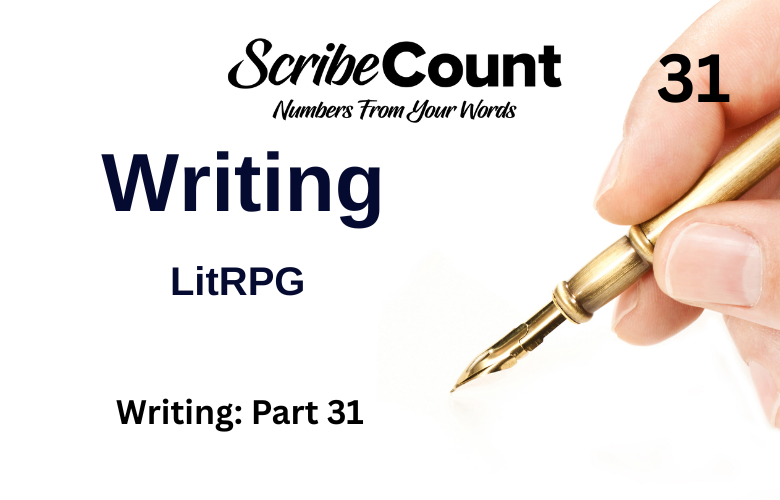LitRPG for Indie Authors: How to Write a Story Where Game and Reality Collide
LitRPG—or Literary Role-Playing Game fiction—is a genre that merges traditional storytelling with video game mechanics. It places characters inside immersive game worlds (or game-like realities) where progression systems, quests, stats, and leveling up are core to the plot. Whether the characters are trapped in a virtual MMO, voluntarily diving into a full-dive experience, or living in a world structured like a game, LitRPG is about survival, power progression, and mastery within a clearly defined system.
Readers of LitRPG are looking for more than fantasy or science fiction. They want structured growth. They want XP gains, skill trees, damage logs, and item descriptions baked into the world. But above all, they want an engaging protagonist—someone they can root for as they grind, build, and climb their way to power.
For indie authors, LitRPG offers one of the most enthusiastic and loyal fanbases in genre fiction. It’s an indie-led space with strong communities, rapid release potential, and high visibility on platforms like Royal Road, Kindle Unlimited, and Audible. This guide will help you create a compelling LitRPG story with authentic systems, addictive progression, and characters that keep readers coming back for the next level.
What Makes a LitRPG Novel?
LitRPG stands for “Literary Role-Playing Game,” and while definitions vary slightly across communities, the genre is built on a few essential pillars:
-
In-world Game Mechanics: The world operates under visible game rules—stats, levels, classes, quests, loot, skills, and often permadeath. These systems are acknowledged by the characters and affect their choices and survival.
-
Progression: The protagonist’s abilities evolve through grinding, training, or questing. Readers expect constant forward motion: new powers, higher levels, better gear, smarter strategy.
-
Integration of Game Elements in Narrative: Skill trees, combat logs, item descriptions, and HUD elements are often included as part of the story’s format. These aren't just decorative—they are part of the world’s logic.
-
A Sense of Challenge: The protagonist must earn their progress. Easy wins kill tension. Readers want to see characters struggle, learn, fail, and come back stronger.
The key difference between LitRPG and adjacent genres (like GameLit or portal fantasy) is the presence of real-time stats and systems as part of the in-world reality. Whether it's an actual virtual game, a post-apocalyptic simulation, or a world governed by divine code, the characters know they’re operating within a structured system—and so do the readers.
The Popularity of LitRPG
LitRPG has exploded in popularity over the last decade, largely driven by indie authors and passionate reader communities. Series like Awaken Online by Travis Bagwell (available on Amazon), He Who Fights With Monsters by Shirtaloon (available on Audible), and The Land by Aleron Kong (available on Kobo) have built massive followings and helped define the genre’s expectations.
The genre thrives on Kindle Unlimited, where binge-reading and rapid-release schedules fuel momentum. It’s also made huge inroads in audiobook markets—especially through platforms like Audible, where long-form, serialized stories with immersive narration hook listeners for hours.
LitRPG is especially appealing to gamers, but it’s also grown beyond that audience. Readers drawn to power fantasy, structured worlds, character progression, and underdog stories have found a home here—even if they’ve never picked up a controller.
For indie authors, LitRPG is not just a genre—it’s a movement. It’s collaborative, data-driven, and loyal. Write a good LitRPG, and your readers won’t just finish the book—they’ll queue up for the next ten.
Reader Expectations for LitRPG
LitRPG readers are some of the most engaged—and demanding—in genre fiction. They expect:
-
Visible, Consistent Systems: If you introduce stats and levels, they need to make sense and stay consistent. Readers will notice if your numbers don’t add up or your skill caps shift without cause.
-
Frequent Progression: Level-ups, gear upgrades, class advancements—every few chapters should deliver some kind of forward movement. Progress is the pulse of a LitRPG.
-
A Proactive Protagonist: Your main character doesn’t need to be overpowered, but they do need to be active—making smart choices, strategizing, grinding, and earning their wins.
-
Game-Like Formatting: Readers expect stat sheets, item drops, quest pop-ups, and system messages. Present them clearly and consistently. Clarity is crucial—this is part of the immersive appeal.
-
Emotional Depth: Mechanics aren’t enough. Readers want character growth, tension, relationships, and stakes. Blend internal challenges with external ones to give your story heart.
-
Genre Blending: Many LitRPGs are also fantasy, sci-fi, isekai, or post-apocalyptic. Readers often expect epic world-building, well-developed lore, and genre fusion done right.
Above all, readers want to be immersed. The more authentic and cohesive your world and system feel, the deeper they’ll dive—and the more likely they’ll hit that coveted “next book” button.
Common Tropes in LitRPG Novels
LitRPG tropes are part of the fun—so long as they’re used creatively. Here are some staples of the genre:
-
Trapped in the Game: The protagonist is stuck in a VRMMORPG, and dying in the game means dying for real. See Sword Art Online or Project Daily Grind by Alexey Osadchuk.
-
The Overpowered Newbie: The MC starts at level 1 but has a broken ability, unique class, or cheat code. The joy comes from watching them learn how to exploit it.
-
Underdog Rise: The MC begins at a disadvantage—exiled, weak, or hated—but earns power through grinding and smart play. Readers love this arc when it’s done with heart.
-
System Apocalypse: The real world becomes gameified after a cataclysmic event. Civilization falls, and people must adapt to RPG mechanics to survive. See Apocalypse: Generic System by Macronomicon.
-
Skill-Based Builds: Rather than brute force or high DPS, the protagonist specializes in stealth, crafting, healing, summoning, or support roles—and dominates through creativity.
-
Clan / Guild Drama: Politics and social systems matter. The MC joins or builds a faction, climbs the ranks, and must manage group conflict as well as personal growth.
Readers adore these tropes—but they expect smart execution, internal logic, and characters who make the system come alive.
Structuring Your LitRPG Novel: The Plot Map
LitRPG novels benefit from structured arcs that parallel game progression. Here’s a format to keep your story moving:
-
Initiation: Introduce the protagonist and their entry into the game world. This could be voluntary or accidental. Define the stakes—what happens if they fail?
-
Tutorial and Discovery: The MC learns the rules, picks a class, chooses skills, and experiences early quests. This stage is critical for immersion—show, don’t tell.
-
First Major Challenge: The MC faces a real threat—often one that tests their build, forces adaptation, and introduces core antagonists or rival players.
-
Growth and Mastery: Grinding, strategizing, alliance-building. Subplots emerge. The MC begins to shape their role in the world and sets larger goals.
-
Raid, War, or Dungeon Boss: A major arc culminates in a high-stakes confrontation. Victory brings rewards, revelations, or access to a new tier of play.
-
Rebirth or New Threat: The next phase begins. The MC levels up emotionally, gains insight, or faces a shocking twist that resets the stakes for the next book.
Final Thoughts for Indie LitRPG Writers
LitRPG is one of the most vibrant genres in indie publishing—and also one of the most technical. It demands creativity and consistency, emotion and math. But if you can thread that needle, you’ll find one of the most loyal and engaged audiences in fiction.
As an indie author, you have the freedom to build systems that fascinate and worlds that feel like games you’d want to play. Don’t get bogged down in the numbers—use them to enhance tension, challenge, and immersion. Your story should be fun, fast-paced, and deeply satisfying to readers who live for optimization, underdog triumph, and richly imagined mechanics.
Your job is part novelist, part game designer, and part dungeon master. But if you do it right, your readers won’t just read your book—they’ll live in it.

